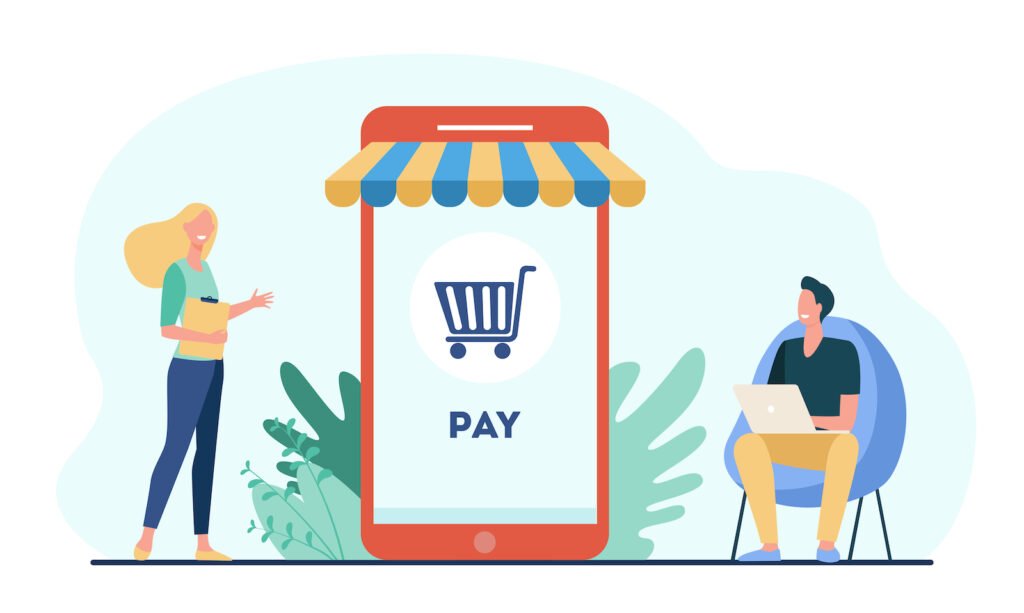With how popular the eCommerce model is among the customers, it is natural that you might be thinking about starting your own business in that niche.
Running an online boutique is probably your best bet – there is always a demand for fashionable clothing and accessories of all kinds, and the potential for specialization and growth is practically limitless.
However, as a prospective entrepreneur, it is very likely that you have no idea how to create this kind of eCommerce business. The process of creating an online boutique is more complex than you might imagine, and it is not something that you should do without extensive preparation and research.
To help you with these, below you will find a detailed guide that might make it easier for you to get ready.
Read on and learn the most important facets of starting an online boutique business!
What Are the First Steps To Starting an Online Boutique?
Everything begins with essentially baby steps. Before you even start to plan the launch of your own online fashion boutique, you need to find an answer to two important questions. The reason for that is simple – these questions are crucial to establishing the foundations of the future success of your business, so you need to get them right before anything else.

How Much Do I Need To Start an Online Boutique?
Creating your own online boutique is significantly cheaper than starting a brick-and-mortar clothing store. Traditional shops face many expenditures that you will not have to deal with if you run your business online, such as the costs of renting a physical location, utility bills, store security, or maintenance.
Taking into account various fees and other necessary elements, you should be able to create a barebones version of your online boutique and get it live with only a few thousand dollars. Of course, this is the absolute minimum amount you need to invest in your business.
Your initial expenses could easily skyrocket to tens of thousands of dollars if you decide to hire a professional web designer to create your online boutique website from scratch and get custom photography for your fashion products.
You might also need to purchase all kinds of clothing, fabrics, and other merchandise before you launch.
Depending on the sort of clothing you will offer in your online store, this can be a large sum of money, so you need to make sure to leave enough funds in your business plan to cover this initial expenditure.
What Do I Need For an Online Boutique?
There is no simple answer to what you will need to start an online boutique – it all depends on the laws and regulations of your country.
To illustrate the point, in the United States you might have to get a number of state and federal licenses and permits to create a business like this. These include, but are not limited to, a business license, a seller’s permit, a sales tax license, and possibly a home occupation permit.
You will also have to decide what sort of business entity you want to become. In most cases, you can set up your online store as one of three different business types – sole proprietorship, limited liability company (LLC), or corporation.
Sole Proprietorship
This is the simplest form of business ownership in the United States. In a sole proprietorship, only one person can be the owner of the enterprise, which means that you have complete control over the company. You will also be able to report the income and losses of your online boutique on your personal tax return.
Another significant advantage of this type of business ownership is that it is easier to set up than a corporation or LLC, as you usually don’t have to register it in your state.
However, this model also requires you to be personally liable for all debts and liabilities of the company. This is a particularly important aspect to consider if you plan to sell online clothes and other products related to fashion, as the risks and potential losses are sometimes high in this niche.
Want to get set up with competitor monitoring, price tracking and even more?
Book a free demo to monitor any e-commerce competitor pricing and get instant info of important price movements and more!
Limited Liability Company (LLC)
An LLC, short for Limited Liability Company, is a business structure that is somewhat similar to a corporation, but it is much simpler and easier to set up.
A big advantage of starting up your online store as a limited liability company is that it will be separate from your personal finances and you will not be personally responsible for business debts and legal challenges.
However, it is worth noting that it is possible to lose your liability protection if the court decides to pierce your corporate veil. Some of the circumstances that can result in this include commingling personal and business finances, failing to follow corporate formalities, or using the LLC to commit fraud.
Corporation
This is the most formal business structure used in the United States. A corporation is a separate legal entity from its owners, which means that you will not be personally responsible for the debts and liabilities of the company.
The main advantage of setting up your future boutique as a corporation is that you can offer stocks and shares to investors, which will help you raise capital more easily.
However, forming a corporation requires more paperwork than an LLC or sole proprietorship, and you will also have to pay corporate taxes. Additionally, the management of a corporation is significantly more complex than other types of businesses, so it might not be the best choice for a first-time entrepreneur.

How to Start an Online Boutique
Now that you understand the prerequisites of starting online boutiques, you need to learn the actual process of setting up and launching businesses like these.
Decide Your Product Niche
First off, you have to decide what sort of niche your online boutique will represent. As the sky is the limit when it comes to possibilities in the fashion industry, it is easy to become confused and overwhelmed by all of the opportunities.
In addition, your future online store needs to be competitive with other businesses on the market – some of which are much bigger and therefore can offer very affordable prices on a wide range of products.
That is why it is very important to narrow down your focus and decide exactly what sort of products you want to offer in your boutique. Do you want to sell online high-quality women’s apparel and nothing else?
Or perhaps you are more interested in selling accessories like handbags, jewelry, or sunglasses? You can even specialize in a specific style of clothing, such as vintage wear or designer clothing.
While all of the choices mentioned above are viable options at first glance, you should do extensive market research before you commit to a single direction.
This way, you will be able to find out what the current trends are, as well as what sort of clothes and accessories are in high demand.
It is also necessary to identify your ideal customer in order to target the right market. Consider their age, gender, income level, and where they live.
At the same time, make sure that your niche is diverse enough to drive the customer lifetime value up. In the long run, it is much cheaper to retain the existing clients than to constantly look for new ones.
The last thing you want is to find out that your customers never return to your online boutique because they simply don’t have enough options to choose from.

Find the Best Ecommerce Platform
Next, you need to look for the best eCommerce solution that will support your type of business. As this will be the foundation of your boutique, it is vital that you make the right choice.
To illustrate how important the eCommerce platform is for the success of your business, your eCommerce software of choice will help you manage and streamline your operations, marketing, and sales, while also providing a level of customer service that will keep your clients satisfied.
There are multiple factors that you need to take into account when choosing from a wide selection of eCommerce platforms. Some of the most important ones include:
Costs
First off, you have to take into account the cost of using the platform – after all, as a fresh business, you have to be very careful with your finances.
Most eCommerce platforms rely on the subscription model, which means that you will be charged a monthly fee to access various features and tools. In addition, consider the scalability – you need to make sure that the platform you choose can handle the growth of your online store.
Ideally, your platform of choice will offer different subscription plans so that you can get access to more key features as your business grows.
User Experience (UX)
Another important factor to keep in mind is the usability of the platform. Choose a solution that offers visually appealing themes without sacrificing usability.
The last thing you want is to find out that your customers are slowly switching to a competitor because the platform you chose makes your website too complicated to navigate.
Focusing on delivering the best user experience possible is key to keeping your customers engaged and driving your sales.
That is further corroborated by research – two-thirds of consumers value their buying experience more than the product pricing, with 52% abandoning their purchases if the website is not up to their liking.
Security
Security breaches are quite common in the eCommerce industry, meaning that you have to pay extra attention to the safety of your platform. Keep in mind that the credibility of your online boutique is at stake – customers will not want to continue shopping at a store that regularly falls victim to various cyberattacks.
Before you pick your eCommerce solution, look at the security credentials of various platforms. Make sure that they have proper protocols in place to keep the client data safe and secure, and that they have a solid reputation in the industry.
A good way to find out if an eCommerce platform is secure enough is to check whether it complies with the Payment Card Industry Data Security Standard (PCI-DSS).

Integration
Last but not least, you need to consider the integration capabilities of your future platform. Once your boutique is up and running, it is likely that you will use various software solutions to further optimize the performance of your small eCommerce business. That means that you might need to connect the platform of your choice with such tools.
While 3rd party integration is common, unfortunately, not all platforms offer the same level of compatibility. Make sure to check the level of support prior to making your final decision.
Ideally, your platform should enable you to easily connect it with accounting, payment processing, shipping, and customer relationship management (CRM) software. This way, you will be able to manage your business in one place without any issues.
Create a Business Plan
Now that you have selected your niche and platform, it is time to start working on your business plan. First off, you need to decide on your business model. As an online boutique, there are a few different options to choose from.
Dropshipping
Dropshipping is a model in which you don’t need to own any inventory. Instead, you only have to take care of the marketing and sales side of the business. When a customer places an order on your website, you simply contact your supplier, who will then ship the products directly to your client.
This is a very popular approach among beginner entrepreneurs, as it requires very little upfront investment – you can start selling without having to buy large quantities of merchandise in advance.
Another significant benefit is that dropshipping helps you offer products from multiple vendors in your online clothing boutique, which can help you appeal to a larger audience.
However, there are also some disadvantages that you need to be aware of. Your Internet boutique has no control over the delivery of the products.
This means you can’t add anything extra for your clients, such as a handwritten thank-you note or a coupon for their next purchase. The design of the package is also determined by the supplier – which usually means featureless cardboard boxes. Additionally, you will have no control over the delivery times and sometimes even shipping costs.
Dropshipping can also lead to issues with quality control. As your online boutique is simply a middleman between the supplier and the customer, you won’t be able to inspect the product before it gets to the client.
Private Label & Print on Demand
The private label is a type of eCommerce model in which you partner with a manufacturing business to make the goods and then you add your own branding.
Print on demand is quite similar to the private label model. The major difference is that you don’t need to buy the products in bulk – instead, you can simply get them as ordered by the customer. This model is ideal for online boutiques that sell highly personalized fashion products, such as meme T-shirts.
Custom Cut and Sew
Another popular option is the custom cut and sew business model. In this case, you create your products from scratch or outsource the manufacturing of your custom articles to a third-party company.
The advantage of the custom cut and sew business model is that you have complete control over the design and quality of your products.
The downside, however, is that it requires a larger upfront investment than other models – it is very labor intensive, and if you decide to use outside contractors for manufacturing, you might need to order large quantities of each product to get a good price.
Once you settle on a model, you need to decide on your pricing strategy. You can either charge a premium for your products or be more price-competitive. The best way to decide is to use specialized tools to see the moves of your competitors, or their approach to promotions and then find the sweet spot for your own business.
Define Your Marketing Strategy
Your business plan should also include a comprehensive marketing strategy. You need to identify which channels are most suitable for your target market and then plan your activities accordingly.

As mentioned above, as a new entrepreneur it is likely that you don’t have a lot of money to spend on marketing. As such, it’s best to focus on advertising channels that offer great reach and are free to use at the same time, such as social media platforms.
Social media marketing can do wonders for online boutiques, but only if the process is implemented correctly. Make sure to carefully study the various platforms and find out where your ideal customers hang out the most. This is a necessary step, as the demographics of social media platforms vary greatly.
For example, if you are targeting young women, you should focus not only on Snapchat and Instagram, but also on Pinterest which has a very high female-to-male user ratio.
On the other hand, trying to appeal to older male customers practically requires you to expand your marketing efforts on more traditional platforms like YouTube or Facebook.
Consider Influencer Marketing
If your business plan allows for it, you should also think about entering into a partnership with a popular influencer in the fashion niche. If you can get them to wear or promote your products on their social media channels, it will help you reach a much larger audience.
Of course, influencer marketing is not free – you will have to pay the influencer for their services. Because of that, try to aim for nano or micro-influencers.
These content creators usually have a relatively small number of followers, meaning that they might be more affordable to partner with. At the same time, their audiences are usually more engaged, which can lead to better results on your side.
Additionally, influencer marketing is a great way to build trust with your target market. As their followers see the influencer they respect wearing or promoting your products, they are much more likely to give your brand a chance.
You should also consider other types of marketing activities that can help you generate traffic and boost your sales. For example, you can offer discounts or coupons for the first purchase in your online boutique, or create a loyalty program that will help you keep your customers coming back for more.
Select a Name and Domain for Your Online Boutique
Your next step is to come up with a name for your online boutique. The name should be original and intriguing to easily capture the attention of a potential customer. Ideally, it should also be simple to remember and pronounce.
In addition, you might want to make the name relevant to your niche. For example, if you are planning on specializing in selling vintage-inspired clothing, you should try to come up with a name that will reflect that e.g., ‘The Good Old Days’ or ‘Once Upon a Time’.
Once you have a list of potential names, it is time to check their availability. Look if the domain name can be used or whether there are any trademarks that might cause issues down the road.
Locate and Vet Your Suppliers
One way or another, you will have to rely on outside contractors to get the products for your online boutique. As such, your next step is to start looking for the right suppliers for your online store.
The quality of the products you offer will be one of the most important factors that determine the success of your business – if the clothes you sell are poorly made, or manufactured out of subpar materials, it is very likely that many of your customers will never come back.
Once you have a list of potential suppliers, it is time to start vetting them. Make sure to look at their websites, read online reviews, and contact them directly to ask any questions you might have.
Additionally, it is best to visit their factories and meet with their representatives in person. This will give you a much better idea of what kind of business you are dealing with and whether they are the right choice for your online boutique.

It’s Time to Launch Your Online Boutique
Now that you have all the pieces in place, it is finally time to launch your online boutique. The first step is to set up your eCommerce platform and create your website.
If you want to save some money, you can try to do it yourself. With enough time and effort, you should be able to create a decent web page.
However, if you want to make sure that your website is state of the art in every sense of the word, it might be better to hire a professional web designer. Just bear in mind that this will add to your initial costs significantly – perhaps even doubling them.
Once your website is up and running, it is time to start adding products. Make sure to take high-quality photos of the clothes and accessories you are selling and to write detailed and engaging descriptions.
Similar to hiring a professional web designer, using the services of a pro photographer will also increase your initial expenses, but it is an investment that can pay off in the long run.
Try to offer multiple payment options to make the process of buying more convenient. Look for a payment processor that will enable you to accept various types of credit cards, as well as other popular solutions like PayPal, Apple Pay, or Google Pay.
Finally, test the functionality of your website thoroughly before you launch it. Make sure that the ordering process is smooth and that the customer experience is flawless.
Begin Mass Marketing
Once your website is live, it is time to start mass marketing your newfound online business.
As mentioned before, social media platforms can be a great way to reach a large audience without spending a lot of money on marketing. Remember to regularly post on your chosen SM platforms.
Make sure that your content is original, visually appealing, and relevant to your target audience. If you are unsure whether you can produce great content on your own, analyze the social media efforts of your competitors and try to improve on what they are doing.
Additionally, try to engage in email marketing. Building a large email list should be one of your top priorities, as it will enable you to reach your customers directly and promote your latest products and deals. It should also positively impact your customer retention.
Finally, consider learning more about various SEO techniques and use them to your advantage. This will help you make sure that your online boutique appears high on the search engine results pages, which can result in more traffic and sales.
Alternatively, you can hire a reputable SEO agency to optimize your website for you.
Hopefully, this guide has given you a better understanding of what it takes to start a successful online boutique. Just remember that success in this industry requires a lot of hard work, dedication, and perseverance.
If you are willing to put in the effort, there is no reason why your boutique couldn’t become a big success! Good luck!

Manager with experience in leading team of software developers and testers during implementation of internal and external IT projects. Ceo of Brandly360.com.


